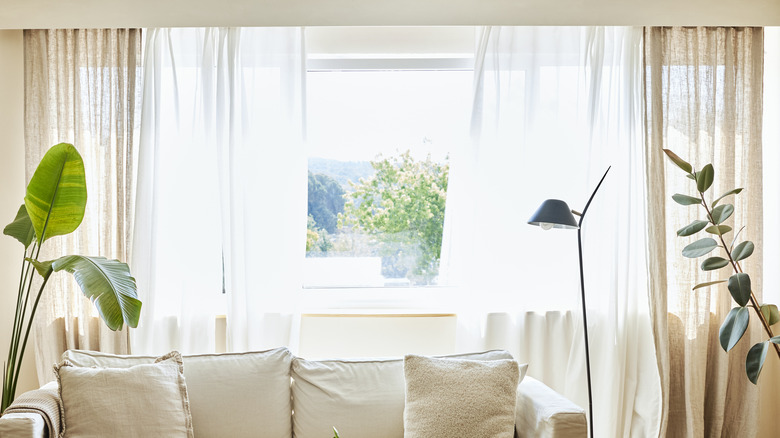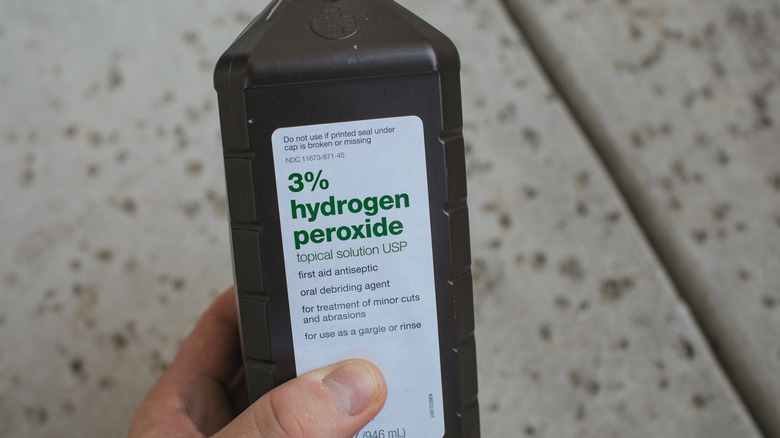Why Hydrogen Peroxide Is Your Best Ally In Taking Curtains From Dingy To Dazzling
Curtains serve an important purpose in the home — not only do they provide privacy and protection from the sun, but they also improve energy efficiency and help regulate home temperatures. However, curtains get the brunt of the dust that's circling around your home, and they can become weathered and worn as time goes on. Curtains can also develop stains from pet activity, mold and mildew, and food and drink spills. To keep your home's curtains in good condition and looking their best, it's essential to do some basic curtain upkeep from time to time. Curtains are one thing in your living room you should be cleaning weekly, if possible.
One of the commonly recommended ways to clean curtains and remove stains is using hydrogen peroxide. This chemical is composed of two hydrogen atoms and two oxygen atoms (H2O2) and is well-known as a powerful disinfectant for medical applications and as a household cleaner — there are some surprising ways to use hydrogen peroxide in your home. Research has shown that the cleaner does a great job of removing stains of coffee, wine, and even blood and can eliminate tough bacteria, such as E. coli and S. aureus.
When using it, you'll need to wear gloves and protect your skin while also ensuring adequate ventilation. Hydrogen peroxide isn't overly harsh on curtains but can do a great job cleaning them while removing problem spots and eliminating dust. It is considered a great alternative to stronger, more chemical-laden household cleaners. A 3% solution of hydrogen peroxide is likely all that's needed to get the job done without causing damage.
Using hydrogen peroxide to clean your curtains
Even if you have the perfect curtains for your space, stains can start making them look rough and unsightly. To try using hydrogen peroxide to remove stains, start by getting a 3% solution. Add it to a spray bottle using one part hydrogen peroxide and two parts water. Remember that you should spot test the solution on an inconspicuous spot before using it, since reactions can vary and it could cause bleaching. Spray the stain with the solution, let it sit for a few minutes, and then blot it with a clean white cloth. Repeat these steps more than once if necessary.
To clean dust from curtains, use this same solution in a spray bottle. As before, spot test it on the curtains before using it. You'll want to start by spraying the solution at the top of the curtains and work your way down from there. You can then use a vacuum with an upholstery attachment to vacuum the curtains and effectively disinfect and remove any dust that's present.
If desired, you can also use hydrogen peroxide when cleaning curtains in your washing machine. This can help brighten white curtains and eliminate stains that are difficult to remove with other methods. To do this, start by pre-treating stains with an equal solution of water and hydrogen peroxide and then letting it sit for about 10 minutes. As you load the washing machine, use your regular laundry detergent and add one cup of hydrogen peroxide directly into the washer. Use warm water and a gentle cycle in the washing machine before proceeding to drying.

